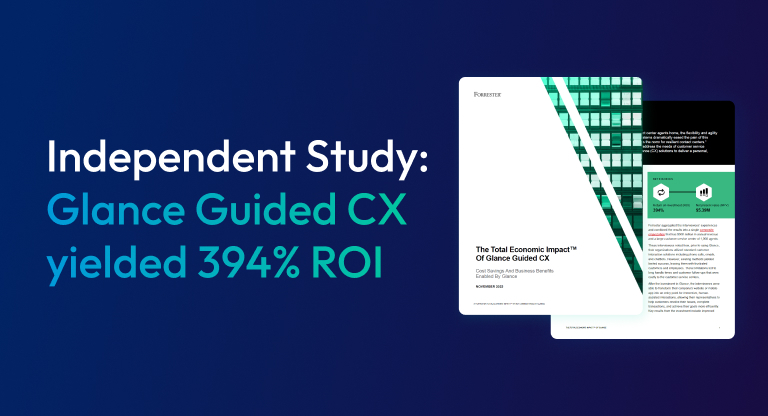Customer satisfaction impacts your business in many ways, making it easy to understand why companies invest in measuring the customer experience. Numbers can tell powerful stories, and organizations are spending up to $1.4 million to collect CX metrics — but are they capturing the right data?
You can’t talk about measuring the customer experience without mentioning the two most popular and recognized CX metrics: Customer Satisfaction (CSAT) and Net Promoter Score (NPS). While both CSAT and NPS can reveal how customers feel about your company, there are attributes that can make one better aligned with your business goals.
Let’s explore both CSAT and NPS to help you understand their differences and identify which one (or both) you should be using to measure your customer experience.
Customer Satisfaction (CSAT)
What is CSAT?
CSAT is a customer satisfaction score. It gauges how satisfied a customer is with your product, service, a specific interaction, or your brand as a whole.
CSAT surveys are simple and easy to understand. Customers answer a variation of the question: “How would you rate your overall satisfaction with the [product/service] you received?” and respond using a 1-5 scale:
- Very unsatisfied
- Unsatisfied
- Neutral
- Satisfied
- Very satisfied
These numbers could also be replaced with icons such as stars or smiley faces to add a more branded touch. Surveys are often distributed immediately after a transaction or communication, as a popup, inside an app, or through SMS. Along with the scale, there’s usually a comment box where respondents can share reasons for their rating.
How is CSAT calculated?
CSAT scores are usually expressed as a percentage from 0-100%, with 100% being the best.
To calculate a percentage CSAT score, use this formula:
(Number of satisfied customers with 4 and 5 scores / Number of survey responses) x 100 = % of satisfied customers
Using the two highest values on feedback surveys (4 and 5) has been shown to be the most accurate predictor of customer retention, so CSAT scores focus on these two values.
Survey results can also be averaged to give you a Composite Customer Satisfaction Score, but this is generally seen as less valuable than the percentage.
When should you measure CSAT?
CSAT can uncover helpful insights into specific aspects or interactions within the customer experience. It’s simple and fast for customers to answer, and captures their satisfaction at a particular moment in time — after receiving customer service, after making a purchase, etc.
You should measure CSAT if you want to pinpoint areas for improvement. By sending CSAT surveys throughout the customer experience, you can identify where in the process customers are most unhappy, and focus your efforts on these pain points to improve customer retention.
Read: A 5-step action plan to lift your customer satisfaction
Net Promoter Score (NPS)
What is NPS?
NPS is often seen as the “gold standard” in CX metrics. Rather than measuring customer satisfaction at a particular moment in time, it measures a customer’s intentions and loyalty to your company.
Just like CSAT surveys, NPS surveys are simple and easy to understand. Customers answer: “How likely is it that you’d recommend [brand/product/service] to a friend or colleague?” and respond using a 0-10 scale. Their response puts them into three categories of customers:
- Promoters (9-10): Customers who respond with a 9 or 10 tend to be loyal and enthusiastic customers. These are your MVPs!
- Passives (7-8): Customers who respond with a 7 or 8 are generally happy with their experience, but not as enthusiastic about it as promoters. They could be lured away by competitors.
- Detractors (0-6): Customers who respond with a score from 0 to 6 are unhappy, likely won’t buy from you again, and may even tell others not to do business with you.
Because the question isn’t tied to a specific event, NPS provides insight into how customers feel about you overall. And just like CSAT surveys, NPS surveys usually include a comment box to capture valuable qualitative information about the customer’s reason for their rating.
How is NPS calculated?
CSAT scores are usually expressed as a percentage from 0-100%, with 100% being the best.
To calculate a percentage NPS score, use this formula:
% of Promoters – % of Detractors = NPS
If you use NPS software, you can compare your scores to competitors, which can be powerful for winning buy-in from stakeholders.
When should you measure NPS?
NPS should be used when you want the big picture. It can be leveraged to identify your biggest champions who you should continue to support and nurture. It can also identify customers who need attention. By converting detractors into promoters, you can have a profound impact on customer retention.
Sending NPS surveys on a consistent basis allows you to monitor customer sentiment over time. Studying NPS scores can help you better understand your target market — the people who are likely to become your best and most loyal customers (promoters).
CSAT and NPS: How they complement each other
CSAT and NPS can both provide valuable insights. CSAT is helpful for pinpointing specific areas for improvement, while NPS gives you a big picture view where you can track overall customer satisfaction over time.
Think of CSAT as your short-term customer satisfaction, and NPS as your long-term game. You could have a satisfied customer, but that doesn’t necessarily mean they’re going to recommend you to a friend.
Earning a high NPS score is harder than achieving a high CSAT score, but it’s all connected. If you work to improve CSAT scores, it’s likely that your NPS scores will also improve. CX professionals know that a customer’s overall perception of your brand is the sum of every interaction they have with you. Improving those individual moments adds up.
Read: Why you might be wasting your CX metrics (and what to do instead)
The bottom line
Both CSAT and NPS capture customer sentiment. CSAT captures customer satisfaction at a specific moment in time (after a transaction, customer service interaction, etc.), while NPS captures the customer’s overall sentiment.
Many companies choose to monitor both, using CSAT for targeted feedback and NPS to track the overall customer experience.
Glance Guided CX solutions work to improve both CSAT and NPS scores. Our visual engagement tools help you deliver engaging, human-to-human guidance when your customers need it most — which increases customer satisfaction, loyalty, retention, and value.
Ready to take your customer experience to the next level? Take a demo today.





